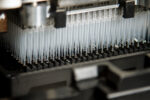$75M Funding Will Help TreeFrog Develop Stem Cell Therapies

TreeFrog Therapeutics has raised $75 million in financing to support the clinical development of its stem cell-derived cell therapies for Parkinson’s disease, the company said in a press release.
The new financing round, which brings the total funding to date to $83 million, will allow the company to use its C-Stem technology to expand the growth of clinical-grade human-induced pluripotent stem cells (hiPSC)-derived cell therapies for Parkinson’s and other diseases.
The French biotech startup expects to launch a first clinical trial for its cell therapy for Parkinson’s in 2024, following promising results in a rat model of the disease. The funds also will help finance the opening of technological hubs in the U.S. and Japan.
One of the new investors is global pharmaceutical company Bristol Myers Squibb, which helped pioneer CAR-T cell therapies, according to TreeFrog.
“In short, funding, management and governance are now secured, as we embark on a very exciting journey, with the deployment of technological hubs in Kobe, Japan, and Boston, MA, and the prospect of treating our first patients in 2024,” said Kevin Alessandri, PhD, co-founder and executive vice president USA, TreeFrog Therapeutics.
The financing will allow TreeFrog to “dramatically increase our capacities and investments in research and development, to consolidate a pipeline of iPS-derived cell therapies targeting neurodegeneration, cardiac and metabolic disorders, as well as blood and immune-related diseases,” said Frederic Desdouits, PhD, the company’s new CEO.
hiPSCs are derived from fully matured cells, such as those in the skin, that have been reprogrammed back into a stem cell-like state — a process called differentiation. Notably, stem cells are able to differentiate into nearly any type of cell. These cells can then be coaxed into becoming many different kinds of mature cells.
For Parkinson’s disease patients, hiPSCs can be used to replace the lost dopamine-producing (dopaminergic) neurons, which are eliminated as the disorder advances.
However, despite significant advances in this field, ensuring the expansion of hiPSCs into large scales while maintaining the cell’s genomic integrity — meaning, no introduction of errors in the cell’s DNA — is a major limitation. The high costs of the process also have limited its development.
The standard for a culture of hiPSCs is at the bottom of dishes in the lab, called a 2D approach. C-Stem technology instead grows the cells by encapsulating them within hollow alginate hydrogel capsules. Inside the capsule, the cells grow in an extracellular matrix to mimic in vivo conditions, or those in a living organism.
This technology platform for the mass production and differentiation of stem cells uses industrial bioreactors. Moreover, the C-Stem technology allows scientists to scale up the cells’ production while preserving their genomic integrity.
According to TreeFrog, the transplant of mature dopaminergic nerve cells derived from hPSCs into the striatum — a section of the brain — of a rat model of Parkinson’s disease resulted in the correction of certain behaviors within six weeks of surgery. The striatum is the brain region involved in voluntary movement control.
“We demonstrated that C-Stem outperforms all existing technologies for pluripotent stem cell expansion in terms of scale and quality,” said Desdouits, who worked in small molecules manufacturing before joining TreeFrog.
“We also confirmed best-in-class preclinical data for our cell therapy program for Parkinson’s disease,” Desdouits said.
Based on these promising preclinical results in Parkinson’s disease, TreeFrog is preparing for a first-in-human trial in 2024. The company also aims to expand its pipeline of cell therapies by partnering with other pharmaceutical companies.
“Through therapeutic and technological partnerships, we intend to drive the adoption of C-Stem by top biopharmaceutical players, so that we can bring the benefits of the technology, in terms of safety, efficacy and cost, to as many patients as possible,” Desdouits said.
The financing round was led by Bpifrance Large Venture, part of the French Public Investment Bank, with U.S. investment firm Leonard Green & Partners, and XAnge, a European venture capital team.
“The progress made by the company since its inception is truly amazing,” said Laurent Higueret, senior investment director at Bpifrance.
“In less than three years, TreeFrog Therapeutics has managed to build a world-leading technology suite for large-scale stem cell manufacturing, with the clear ambition to unlock the potential of cell therapies at an industry level and bring regenerative medicine products to the patients faster,” Higueret said.
Higueret now has joined the board of TreeFrog, along with Peter Zippelius of Leonard Green, who said his company is keen to support the development and exansion of cell therapy applications.
“TreeFrog has made tremendous progress in developing C-Stem and overcoming many of the bottlenecks in the manufacturing of induced pluripotent stem cells, that will substantially enhance the ability to manufacture cell therapies at scale,” Zippelius said.








